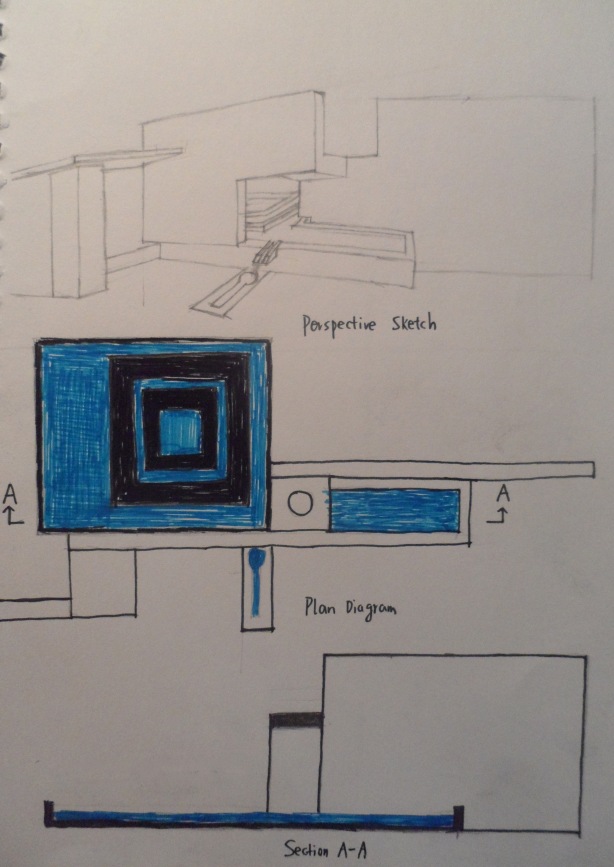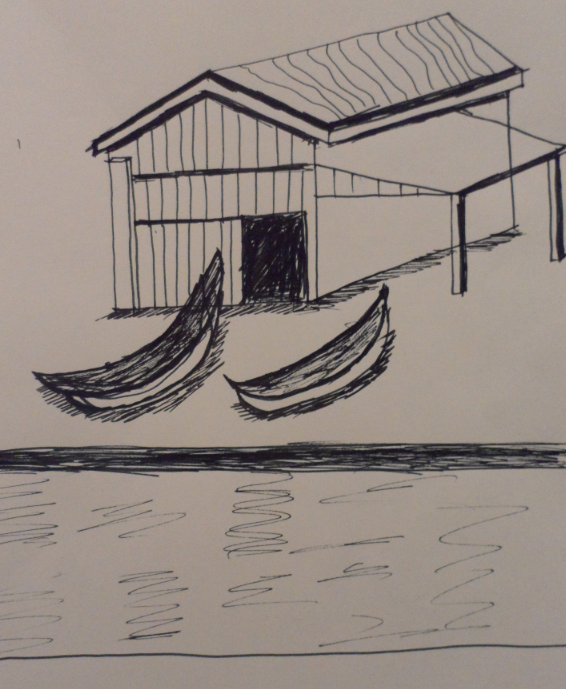Today we visited Carlo Scarpa’s well known renovation of the Querini Stampalis Foundation in Venice Italy, in general, it is a particularly impressive example of a renovation project which layers the past and present constructions into a powerful assemblage.
Front bridge entrance, it is closed as we visited.
Interior Hall
Plan Diagram
The Fondazione Querini Stampalia was founded in Venice 1869 by the last descendant of the Venetian Querini Stampalia. The site is composed of the living quarters, an archive, a library, and a museum of paintings and furnishings. In 1949, the Presidential Council of the Fondazione Querini Stampalia decided to begin the restoration of some parts of the Palazzo Querini. Malino Dazzi, director of the foundation, tasked Carlo Scarpa to restore the ground floor, which was in a state of neglect and decay. The project was completed just over ten years later.The restoration project included careful cleaning of four existing architectural elements: the bridge, the entrance, the portico and the garden.
Scarpa’s museum renovations exhibit his minimalist style within historic buildings, a style that allows the existing context to pass beneath and behind the new work without being disturbed. However, it was not the invention of spatial themes with which Carlo Scarpa was involved, but rather the manipulation of materials in relation to the human body.
For this visit, I focused on two aspects of the building: detail and water
Detail:
Scarpa’s expression of detail in this building varies at different scale, with different combination of materials, such as steel, concrete, glass and brick. Here are some examples I found intriguing about this building.
This is a staircase at the side entrance, it is an innovative stair to me due to the way that each step continuous and warp around the step above.
This detail shows how concrete hangs out of the brick wall, thus to give a feeling of depth.
This detail is a celebration of the intersection of steel and concrete
A fascinating column detail showing the compositional relationship of glass and concrete
An innovative door, it is a an interesting way to bring light in as well.
Water:
Scarpa is a master of using the water as a critical element in his building, what I found interesting is he introduced the experience of water in two different ways: the flowing water and the static water. For the flowing water, it creates dynamic feeling for the space, on the one hand, we can see something flowing compared to the other static objects surrounding it, on the other hand, we can hear the water as well, it is a special feeling as we could “listen” to architecture.
For the static water pool, the transparent nature of water gives us a feeling of brightness. Also, it reflects the scenario surrounding it thus giving an illusionary sense for people. Last but not least, Scarpa loves the zen idea taken from Japanese culture, the static water makes us feel peaceful. Here are some photos I took thus to support my point.
These details show how well done of the usage of water in this building.






















